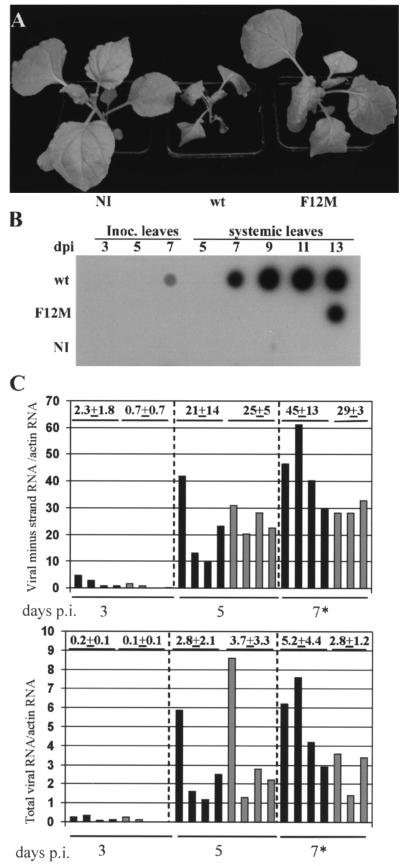FIG. 4.
Phenotypic assessment of the VPg F12M mutation for TuMV multiplication in N. benthamiana. (A) Noninoculated (NI) N. benthamiana plants and plants stab inoculated with TuMV wt and TuMV F12M were compared. At 12 days p.i., plants infected with TuMV F12M showed significantly fewer symptoms than those infected with the wt TuMV. (B) Hybridization analysis of total viral RNA accumulation in plants illustrated in panel A. Stab-inoculated (Inoc.) and systemically infected (systemic) leaves were harvested 3, 5, and 7 and 5, 7, 9, 11, and 13 days p.i., respectively. Viral RNA accumulation was substantially less for the TuMV F12M mutant than for wt TuMV. (C) Hybridization analysis of minus-strand (top) and total (bottom) viral RNAs in patches of N. benthamiana leaves infiltrated to give infections with wt TuMV (solid bars) or TuMV F12M (shaded bars). Individual data points are expressed as arbitrary units relative to hybridization with a probe for actin RNA as an invariant standard. The mean data points for all the leaf samples are presented. The overall mean value ± standard deviation is given above each set. Because of the different specific activities of the probes for different viral RNAs, the upper and lower panels are not quantitatively comparable. *, only three samples were available for mutant infections at 7 days p.i.

